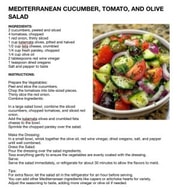Warning! New guidelines state that there’s no safe limit of alcohol you can drink
- Replies 2
We’ve all heard the saying ‘Drink responsibly’. But this week, when it comes to alcohol consumption, Canada says the safest limit is no drinks at all.
According to new guidelines released in Canada, no amount of alcohol is safe and having ‘two drinks a week is risky’.
But what did experts find to come to this conclusion?
Experts from the Canadian Centre on Substance Use and Addiction (CCSA) spent two years making the report and involved a panel of two dozen experts examining almost 6,000 peer-reviewed studies.
Peter Butt, Associate Professor from the University of Saskatchewan and the Co-Chair of the project, said that new evidence has emerged since the last guidelines were released more than a decade ago.
Canada’s previous guidelines (published in 2011) recommended ‘no more than 15 drinks for men and 10 drinks for women per week’ to avoid long-term health risks. In Australia, the guidelines say that healthy men and women should ‘drink no more than 10 standard drinks a week’.
The associate professor stated that the health risk increases with the amount of alcohol consumed.
‘By our definition of “low risk” – which is an international one with regards to people engaging in a voluntary activity – what we found is one to two of our standard drinks per week would be considered low, three to six of our standard drinks per week would be considered moderate, and seven plus would be considered increasingly high in terms of the risk zones,’ he continued.
These risks include certain cancers, such as colorectal and breast cancer, which develop from drinking three to six alcoholic beverages a week.
Meanwhile, having more than seven drinks a week increases the risk of heart disease and stroke.
‘Once you get into the seven plus range then you are at an increasingly high level of risk,’ Dr Butt said.
He continued that people should decrease their alcohol intake and emphasised that ‘less is better’.
The report included all recent available data that showed how alcohol caused nearly 7,000 cancer deaths in Canada – with most of these cases being breast or colon cancer. This was followed by colorectal cancer, mouth and throat, liver, oesophagus, and laryngeal cancer.
Additionally, the CCSA called for health warning labels that have ‘cancer risks’ to be placed on alcohol containers. These received immediate pushback from parts of the Canadian alcohol industry. Most of them argued that they were already informing consumers of the risks associated with alcohol consumption.
There have been similar calls in the past for the same rule to be implemented in Australia, with the Cancer Council saying that this would be a ‘powerful way’ of raising awareness. The alcohol industry in Australia has opposed any cancer warning labels, stating that there was ‘no scientific justification’ that proved the claims.
It is estimated that 5.6 per cent of cancer cases in Australia each year are caused by ‘long-term’ chronic use of alcohol. You can read more on that here.
Australia’s guidelines were revised in 2020 with an aim to reduce the risk of harm from alcohol-related disease or injury. The recommended consumption is ’10 standard drinks a week, and no more than 4 standard drinks on any one day’. The threshold for ‘low-risk’ is a one-in-100 risk of dying from alcohol-related disease or injury.
These guidelines vary because the ‘low-risk’ levels are dependent on each country. Even Stanford Medicine researchers found the amount of alcohol in each country’s ‘standard drink’ ranged from 8 to 20 grams.
For example, Ireland (like Australia) defines a standard drink as 10 grams of alcohol. But unlike Australia, their guidelines state that fewer than 11 standard drinks for women and 17 standard drinks for men are considered ‘low-risk’.
Even when the standard drinks have the same definition, other factors such as cultural attitudes, affect the guideline’s policies. So, when do these guidelines even matter?
Well, researchers explained that whether or not these sets of rules are implemented as public policies, following them will still reduce the burden of disease.
‘Alcohol is identified as a priority substance in the National Drug Strategy, with the consumption of alcohol contributing toward a range of adverse health outcomes, and significantly increasing Australia's burden of disease,’ a spokesperson from the Department of Health said.
They continued that consumers need access to accurate and clear information about what they consume and its impact on their health to ‘make informed decisions’.

Do you think health warning labels should be placed on alcohol products? Share your thoughts in the comments below.
According to new guidelines released in Canada, no amount of alcohol is safe and having ‘two drinks a week is risky’.
But what did experts find to come to this conclusion?
Experts from the Canadian Centre on Substance Use and Addiction (CCSA) spent two years making the report and involved a panel of two dozen experts examining almost 6,000 peer-reviewed studies.
Peter Butt, Associate Professor from the University of Saskatchewan and the Co-Chair of the project, said that new evidence has emerged since the last guidelines were released more than a decade ago.
Canada’s previous guidelines (published in 2011) recommended ‘no more than 15 drinks for men and 10 drinks for women per week’ to avoid long-term health risks. In Australia, the guidelines say that healthy men and women should ‘drink no more than 10 standard drinks a week’.
The associate professor stated that the health risk increases with the amount of alcohol consumed.
‘By our definition of “low risk” – which is an international one with regards to people engaging in a voluntary activity – what we found is one to two of our standard drinks per week would be considered low, three to six of our standard drinks per week would be considered moderate, and seven plus would be considered increasingly high in terms of the risk zones,’ he continued.
These risks include certain cancers, such as colorectal and breast cancer, which develop from drinking three to six alcoholic beverages a week.
Meanwhile, having more than seven drinks a week increases the risk of heart disease and stroke.
‘Once you get into the seven plus range then you are at an increasingly high level of risk,’ Dr Butt said.
He continued that people should decrease their alcohol intake and emphasised that ‘less is better’.
The report included all recent available data that showed how alcohol caused nearly 7,000 cancer deaths in Canada – with most of these cases being breast or colon cancer. This was followed by colorectal cancer, mouth and throat, liver, oesophagus, and laryngeal cancer.
Additionally, the CCSA called for health warning labels that have ‘cancer risks’ to be placed on alcohol containers. These received immediate pushback from parts of the Canadian alcohol industry. Most of them argued that they were already informing consumers of the risks associated with alcohol consumption.
There have been similar calls in the past for the same rule to be implemented in Australia, with the Cancer Council saying that this would be a ‘powerful way’ of raising awareness. The alcohol industry in Australia has opposed any cancer warning labels, stating that there was ‘no scientific justification’ that proved the claims.
It is estimated that 5.6 per cent of cancer cases in Australia each year are caused by ‘long-term’ chronic use of alcohol. You can read more on that here.
Australia’s guidelines were revised in 2020 with an aim to reduce the risk of harm from alcohol-related disease or injury. The recommended consumption is ’10 standard drinks a week, and no more than 4 standard drinks on any one day’. The threshold for ‘low-risk’ is a one-in-100 risk of dying from alcohol-related disease or injury.
These guidelines vary because the ‘low-risk’ levels are dependent on each country. Even Stanford Medicine researchers found the amount of alcohol in each country’s ‘standard drink’ ranged from 8 to 20 grams.
For example, Ireland (like Australia) defines a standard drink as 10 grams of alcohol. But unlike Australia, their guidelines state that fewer than 11 standard drinks for women and 17 standard drinks for men are considered ‘low-risk’.
Even when the standard drinks have the same definition, other factors such as cultural attitudes, affect the guideline’s policies. So, when do these guidelines even matter?
Well, researchers explained that whether or not these sets of rules are implemented as public policies, following them will still reduce the burden of disease.
‘Alcohol is identified as a priority substance in the National Drug Strategy, with the consumption of alcohol contributing toward a range of adverse health outcomes, and significantly increasing Australia's burden of disease,’ a spokesperson from the Department of Health said.
They continued that consumers need access to accurate and clear information about what they consume and its impact on their health to ‘make informed decisions’.
Key Takeaways
- Canada's most recent guidelines have determined that there is no safe level of alcohol consumption and that any more than two drinks a week poses a health risk.
- It stated that the risks associated with alcohol consumption increase with every additional drink and can lead to certain types of cancer, heart disease, and stroke.
- These guidelines are different from Australia's, which stipulate that healthy men and women should drink no more than 10 standard drinks a week.
- The Canadian report has also recommended health warning labels be added to alcohol containers, with similar calls being made in Australia.










